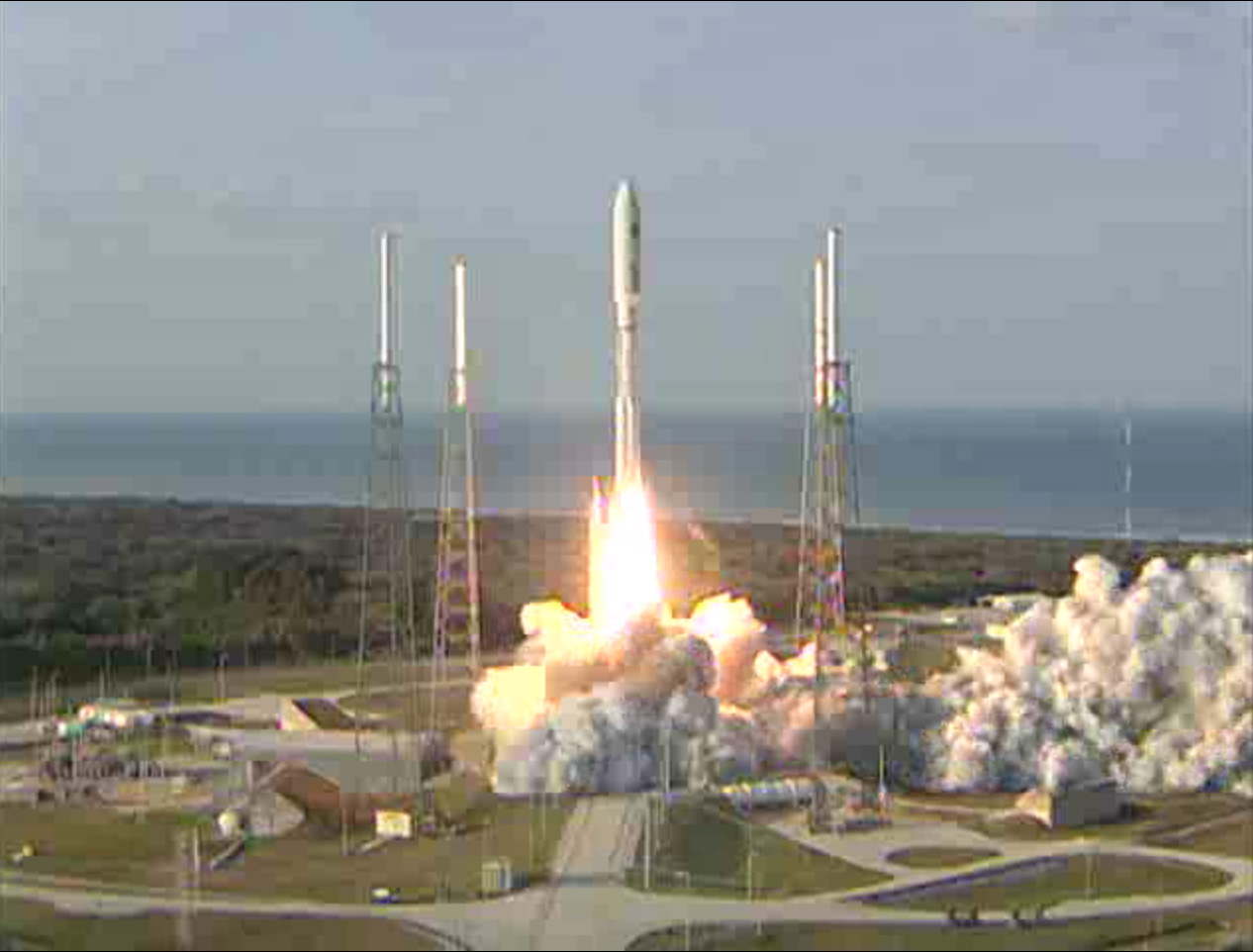US Navy Launches Next-Generation Military Satellite

The United States Navy launched an advanced tactical satellite today (Feb. 24), lofting to orbit the first spacecraft in a new communications constellation that should provide a big upgrade for American troops.
The Mobile User Objective System-1 (MUOS-1) satellite blasted off at 5:15 p.m. EST (2215 GMT) today, riding an Atlas 5 rocket into the skies above Florida's Cape Canaveral Air Force Station after an eight-day delay. The satellite was supposed to launch last week, but strong upper-level winds and thick clouds caused scrubs on both Feb. 16 and Feb. 17.
MUOS-1 will settle into a geostationary orbit above the Pacific Ocean, then undergo about six months of checkouts and tests before becoming operational, Navy officials have said.
The four-satellite MUOS constellation is designed to augment and eventually replace the current network that helps American warfighters around the globe communicate and coordinate. [Photos: Launch of Navy's MUOS-1 Satellite]
"MUOS will greatly enhance the capabilities of the warfighter to communicate on the move," said Mark Pasquale, vice president and MUOS program manager at Lockheed Martin, in a statement. Lockheed Martin is building the MUOS satellites for the U.S. military.
"The system will provide military users 16 times the communications capacity of existing satellites, including simultaneous voice, video and data capability enhancements, and we look forward to achieving mission success for our customer," Pasquale added.
Today's liftoff marked the 200th launch for the Centaur upper stage, which is part of the Atlas 5 rocket. The Centaur first lifted off the pad back in 1962; in the years since, it has helped launch many spacecraft, including NASA's Voyager and Viking probes in the 1970s and the Curiosity Mars rover this past November.
Breaking space news, the latest updates on rocket launches, skywatching events and more!
A big communications boost
The U.S. military currently relies on a constellation of satellites called UHF Follow-On, or UFO, for much of its communications needs. However, this network is aging, and two of the satellites stopped working several years ago, bringing the number of functional spacecraft down to eight.
Further, the military's demand for communications capacity is on the rise, due largely to a sharp increase in the use of unmanned aircraft. The MUOS network is an attempt to boost that capacity, and to shift the burden away from the deteriorating UFO system.
When it's complete, the MUOS constellation will consist of four active satellites, plus one orbiting spare. Each MUOS satellite will carry two payloads — one similar to the UFO payload (to provide links to currently deployed user terminals), and a new digital payload that will boost communications capacity significantly.
"Utilizing commercial 3G cell phone and satellite technology, MUOS will provide mobile warfighters point-to-point and netted communications services at enhanced data rates and priority-based access to on-demand voice, video and data transfers," Lockheed Martin officials wrote in a recent statement.
A few years away
It will be a few years before American warfighters can take full advantage of the MUOS network.
For starters, MUOS-1 has to undergo that six-month checkout period. And engineers still haven't finished the software that will allow users to communicate with MUOS-1's digital payload, so the satellite will likely use its UFO-like payload exclusively for a spell after coming online.
Further, it will take a while to complete the MUOS constellation. MUOS-2 is scheduled for launch in July 2013, with MUOS-3, 4 and the spare perhaps following at roughly one-year intervals, officials have said.
Lockheed Martin won a $2.1 billion Navy contract to build MUOS-1, MUOS-2 and associated ground control architecture back in September 2004. The Navy later exercised an option to build three more MUOS spacecraft.
You can follow SPACE.com senior writer Mike Wall on Twitter: @michaeldwall. Follow SPACE.com for the latest in space science and exploration news on Twitter @Spacedotcom and on Facebook.

Michael Wall is a Senior Space Writer with Space.com and joined the team in 2010. He primarily covers exoplanets, spaceflight and military space, but has been known to dabble in the space art beat. His book about the search for alien life, "Out There," was published on Nov. 13, 2018. Before becoming a science writer, Michael worked as a herpetologist and wildlife biologist. He has a Ph.D. in evolutionary biology from the University of Sydney, Australia, a bachelor's degree from the University of Arizona, and a graduate certificate in science writing from the University of California, Santa Cruz. To find out what his latest project is, you can follow Michael on Twitter.
